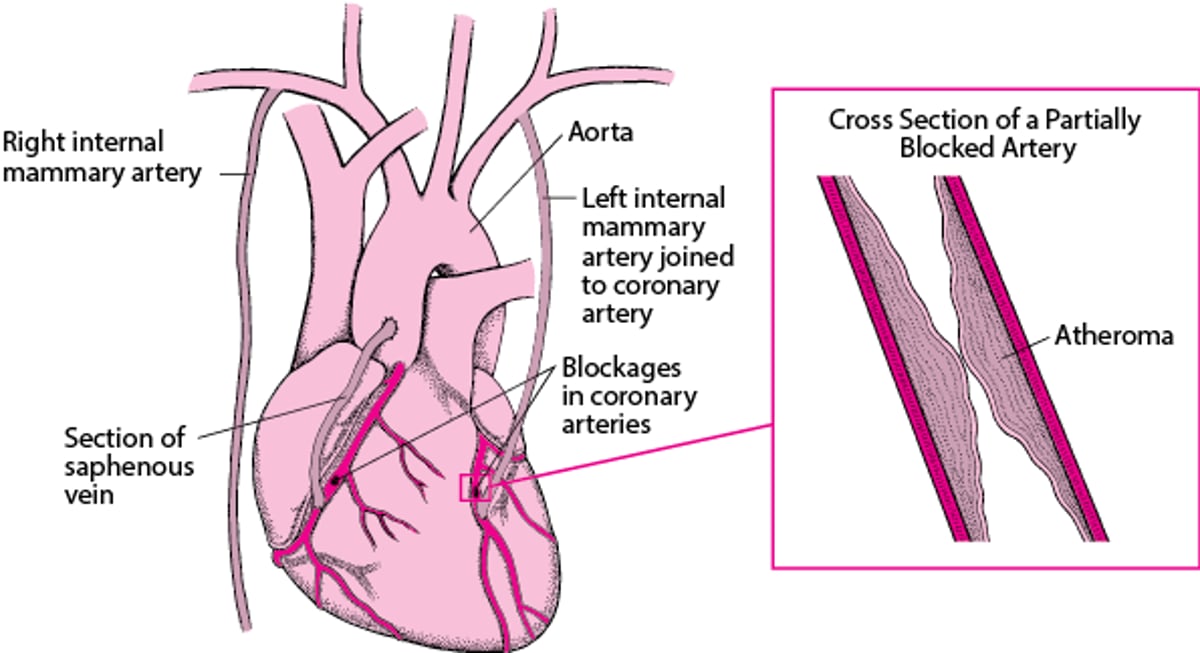Coronary Artery Bypass Grafting
Coronary artery bypass grafting consists of attaching an artery or part of a vein to a coronary artery, so that the blood has an alternate route from the aorta to the heart muscle. As a result, the narrowed or blocked area is bypassed. An artery is preferred to a vein because arteries are less likely to become blocked later. In one type of bypass grafting, one of the two internal mammary arteries is cut, and one of the cut ends is attached to a coronary artery beyond the blocked area. The other end of this artery is tied off. If an artery cannot be used or if there is more than one blockage, a section of a vein—usually, from the saphenous vein, which runs from the groin to the ankle—is used. One end of the section (graft) is attached to the aorta, and the other to a coronary artery beyond the blocked area. Sometimes a vein graft is used in addition to the mammary artery graft.

